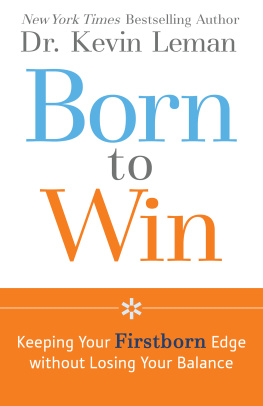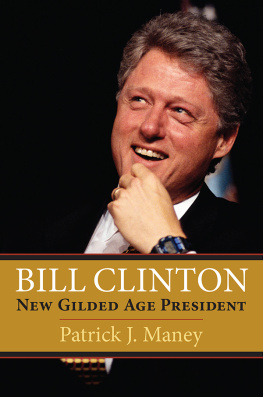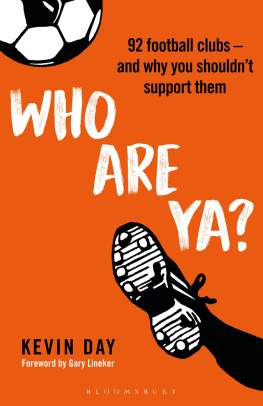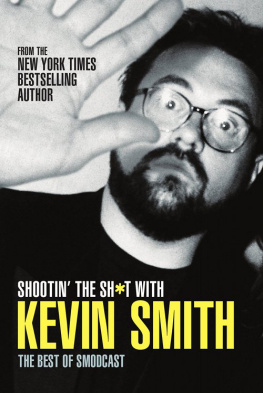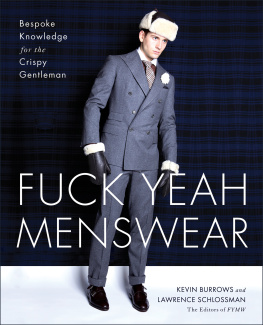Kevin Maney - Trade-Off
Here you can read online Kevin Maney - Trade-Off full text of the book (entire story) in english for free. Download pdf and epub, get meaning, cover and reviews about this ebook. year: 2009, publisher: Crown, genre: Romance novel. Description of the work, (preface) as well as reviews are available. Best literature library LitArk.com created for fans of good reading and offers a wide selection of genres:
Romance novel
Science fiction
Adventure
Detective
Science
History
Home and family
Prose
Art
Politics
Computer
Non-fiction
Religion
Business
Children
Humor
Choose a favorite category and find really read worthwhile books. Enjoy immersion in the world of imagination, feel the emotions of the characters or learn something new for yourself, make an fascinating discovery.

- Book:Trade-Off
- Author:
- Publisher:Crown
- Genre:
- Year:2009
- Rating:5 / 5
- Favourites:Add to favourites
- Your mark:
- 100
- 1
- 2
- 3
- 4
- 5
Trade-Off: summary, description and annotation
We offer to read an annotation, description, summary or preface (depends on what the author of the book "Trade-Off" wrote himself). If you haven't found the necessary information about the book — write in the comments, we will try to find it.
Trade-Off — read online for free the complete book (whole text) full work
Below is the text of the book, divided by pages. System saving the place of the last page read, allows you to conveniently read the book "Trade-Off" online for free, without having to search again every time where you left off. Put a bookmark, and you can go to the page where you finished reading at any time.
Font size:
Interval:
Bookmark:
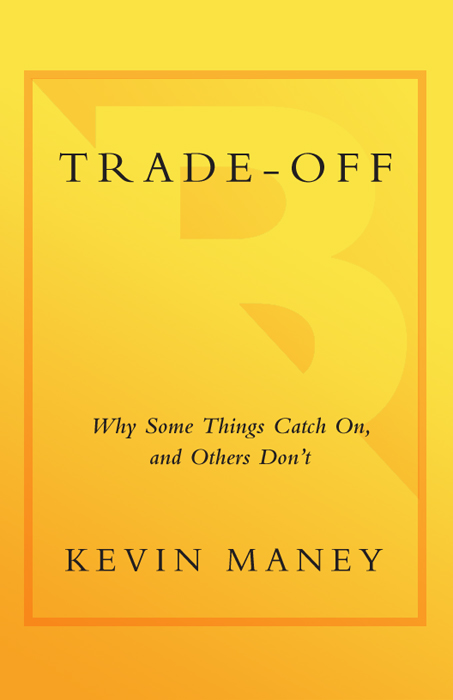
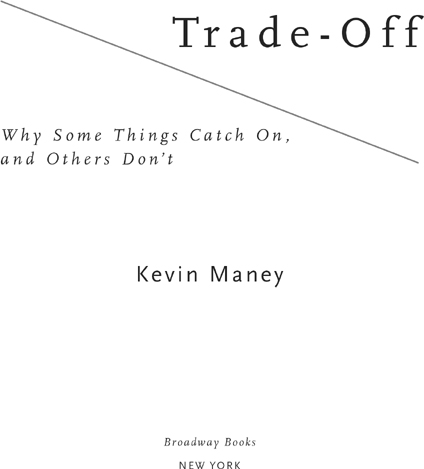
For my mom, who has shown me a thing or two about strength.
PART ONE /
Chapter One
Chapter Two
Chapter Three
Chapter Four
PART TWO /
Chapter Five
Chapter Six
Chapter Seven
Chapter Eight
Chapter Nine
Chapter Ten
Chapter Eleven
Chapter Twelve
Chapter Twelve
Im not a great believer in fate, but sometimes the universe conspires in beguiling waysand when it does, you have to go with it.
Many things in my work life were pointing to this book. But then, after I put a proposal together and my terrific agent, Sandy Dijkstra, floated it to editors, I ran smack into the worst personal crisis in my adult life. Just when I desperately needed some good news, Sandy called on a Monday to say that Roger Scholl at Doubleday was enthusiastic about the idea. By Thursday we had a deal. Everything seemed to come together at just the right moment, and youre holding the result.
So, thank you, Roger and Sandy, for believing in this idea and helping to see it through.
I want to thank some of the smartest people I know for helping me work out the concepts. Ted Leonsis met me at his office at the Washington Capitals practice rink. Marc Andreessen drew graphs in my notebook at his favorite restaurant, Hobees, in Palo Alto, California. Jeff Bezos talked with me in a conference room at Cond Nast in New York. Kodaks executive team pounded on my fidelity-swap ideas on an unusually warm February afternoon in Rochester, New York. And here in Virginias Fairfax County, George Mason University business professor J. P. Auffret helped me over the course of many lunches.
Thanks, also, to Cond Nast Portfolio magazine, which I joined in 2007. Unfortunately, it died in April 2009 as I was finishing this book. My editors there were supportive of this project. And I want to acknowledge USA Today, where I spent almost half my life and learned most of what I know about journalism. Scattered portions of this book first appeared in Portfolio or USA To day.
A thank-you goes out to my brother Scott. His advertising and design firm, Jones Inc., created the fidelity-swap graphic.
Finally, thanks to Alison and Sam. Id always been told that kids turn into aliens when they hit their teenage years. Theyve proved the conventional wisdom wrong, and Ive never enjoyed them more than while seeing them through high school and everything thats gone with it. Heres to hoping this book helps pay for college.
In 1992, I had my first of many conversations with Kevin Maney. Kevin, then a young technology reporter for USA Today, called me at my office at the Stanford Graduate School of Business to discuss the life cycles of entrepreneurial companies. Kevin had been working on a story about Apple, and he was trying to make sense of the companys erratic trajectory. I returned Kevins call, and we had an hour-long conversation that began with me pummeling him with questions. What did he see as the challenges for Apple? Why did he think that Apple had underestimated Microsoft? What did he think of Apple trying to make itself into a business computing company? What did he make of the Newton? Kevin impressed me with his prescient view that the passing of time would show Apples ouster of Steve Jobs in the mid-1980s to be one of the most colossal blunders in American business history. Keep in mind: this was 1992, with Jobs off in the wilderness, fully five years before Jobss triumphant return to Apple.
Kevin Maney stood out to me thenand stands out to me todayas one of the most insightful journalists about the dynamic world of technology, the companies that rise and fall based on those technologies, and the people who seek to change the world through those technologies. Kevin has a peculiar genius for seeing what makes people tick. And it is, after all, people who invent new technologies, build companies, destroy companies, exercise power, act with wisdom, and engage in folly. Whether it be conversations with sages like Andy Grove, transformational leaders like Anne Mulcahy, creative entrepreneurs like Bill Gates, or societal figures like Michael Bloomberg, Kevin brings a sort of Vulcan-mind-meld ability to his work; he listens and observes with precision, makes sense of what he has heard, and then finds a way to communicate it to the rest of us with great clarity.
In the two decades he worked as technology columnist for USA Today, he wrote more than six hundred columns, plus dozens of feature stories and two books. He held a front-row seat for some of the most significant technology and business stories, sitting right smack in the middle of the boom and bust cycles of the 1990s and 2000s. He covered the rise of the Internet, the Netscape supernova and subsequent browser wars, the near-death and resurrection of Apple, the vise grip on the personal computer industry enjoyed by Microsoft, the loosening of that vise grip in recent years, the near-destruction of IBM and its spectacular resurrection, the Googlizing of the world, the creation of AOL and the ill-starred Time Warner deal, the rise and fall and near-collapse of Motorola, the birth of a capitalist computer industry in Russia, the early Internet in China, and dozens of other major stories. Throughout, he interviewed key protagonists and extracted meaning from the melee; he not only covered the rapid evolution of technologies, companies, and industries, butmost importanthe made sense of them as they evolved.
Along the way, he came to a conclusion about the best people hed covered: They have the courage to make rigorous choices. They dont delude themselves into thinking they can do everything, so they focus on only what they can do with great distinction.
His conclusion rings true. Without question, the best leaders weve studied across our research into what makes great companies displayed tremendous discipline in their decisions. They did not succumb to undisciplined pursuit of growth and short-term success. They did not sway with the political windthis way and thatand they adhered fanatically to a set of core values. They paid tremendous attention not just to what to do, but equally to what not to do.
Building on this idea, Kevin now stands back in this book to synthesize all of his work into a single concept that helps to explain and integrate much of what hes observed. His concept: that those who have the courage to make rigorous choices between high-fidelity and high-convenience do better than those who make no clear and rigorous choices. A strategic lenssuch as the one provided here in Trade-Offdoes not in itself give an answer about what you should do, and not do. Ratherand much betterit forces you to engage in a powerful question, from which you derive your own insight and make your own decisions. If you engage your team in a vigorous debate stimulated by the questions that naturally arise from the ideas in these pages, you will gain deeper understanding not just of what you should be doing (or not) but, even more important, why. The power of a strategic concept lies first and foremost in giving us a lens and a stimulus for hard thinking and hard choices. The critical question is not its universal truth, but its usefulness. And in this, I believe Kevin Maney has extracted a very useful framework.
Font size:
Interval:
Bookmark:
Similar books «Trade-Off»
Look at similar books to Trade-Off. We have selected literature similar in name and meaning in the hope of providing readers with more options to find new, interesting, not yet read works.
Discussion, reviews of the book Trade-Off and just readers' own opinions. Leave your comments, write what you think about the work, its meaning or the main characters. Specify what exactly you liked and what you didn't like, and why you think so.

